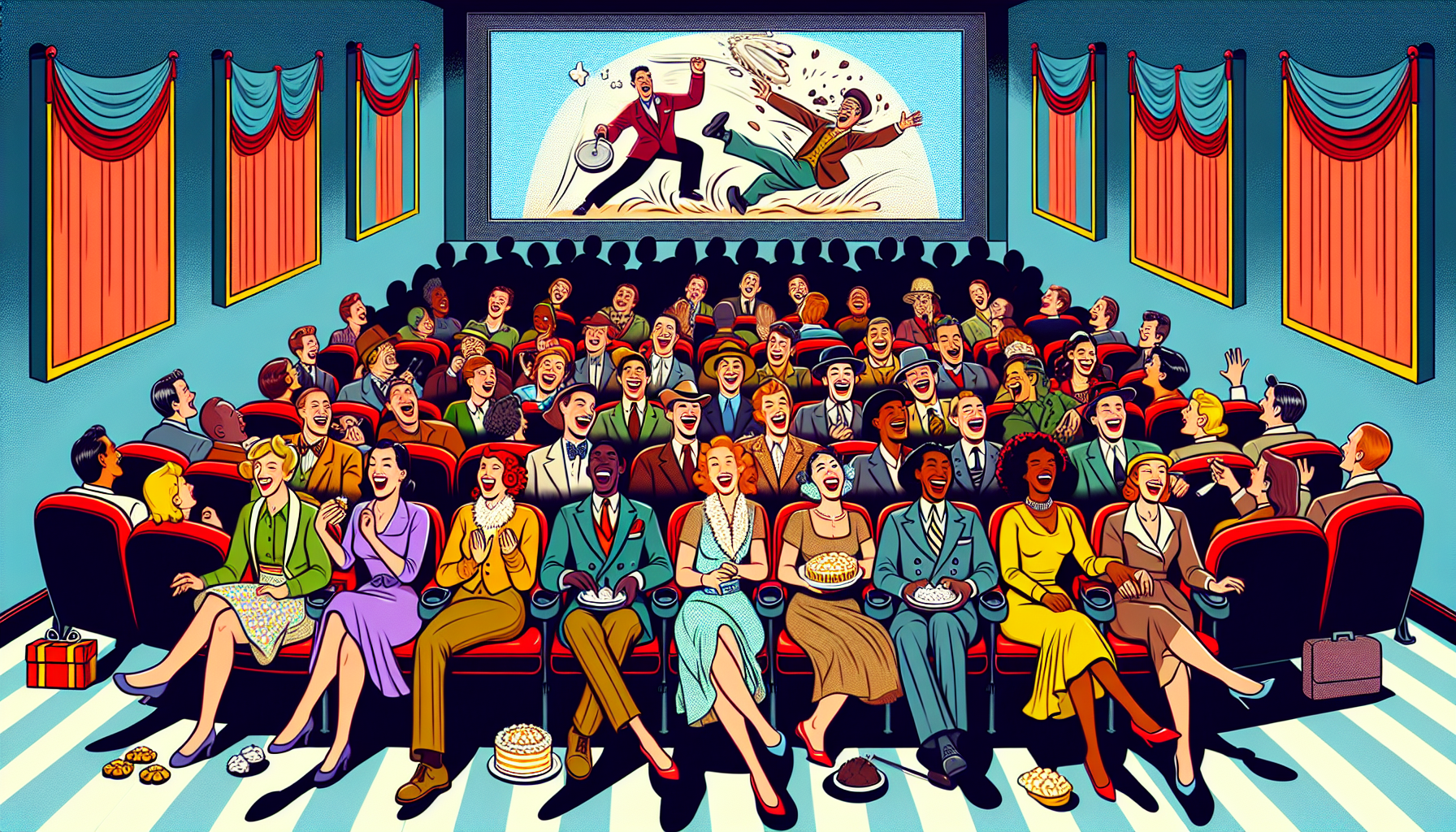
A Tickle in the Cinema: How Physical Comedy Got Us Guffawing Through the Ages
Let’s face it, there’s nothing quite like the sheer, unabashed joy of witnessing a grown adult faceplant in a perfectly executed slapstick moment in cinema. Physical comedy, my friends, is the universal language of hilarity, transcending the pesky barriers of dialogue and diving straight for the funny bone. This dazzling domain of pratfalls, pie throws, and perfectly-timed shenanigans has had audiences rolling in the aisles since the dawn of film.
The Silent Era: Where It All Began
Picture this: black and white footage, a man with a mustache thicker than a broom, and a banana peel that’s about to change cinematic history. Yes, we’re talking about the silent film era, the golden age of physical comedy. Without the crutch of dialogue, silent movie stars like Charlie Chaplin, Buster Keaton, and Harold Lloyd had to rely solely on their actions to provoke laughter—and boy, did they deliver. Chaplin’s wobbly-legged Tramp and Keaton’s deadpan resilience turned calamity into an art form. These pioneers understood that the human body could be as expressive as a thousand words, and they weren’t afraid to get a bruise or two for the perfect shot.
Technicolor Tumbles and the Rise of the Sound Era
Then came the talkies, and with them, a new breed of physical comedians. The introduction of sound didn’t steal the spotlight from our beloved slapstick; it gave it a nice, loud, slap-bassy backing track. The Marx Brothers, with their chaotic blend of verbal wit and physical hijinks, showed that you could have your cake and pie someone in the face with it too. And let’s not forget Lucille Ball, whose comic timing and flexibility made her the queen of televised physical comedy. I mean, who can hold a straight face watching Lucy stomp grapes or wage war on a relentlessly speeding chocolate factory conveyor belt?
The Modern Age: Physical Comedy in Contemporary Cinema
You might think that physical comedy fizzled out with the advent of special effects and CGI marvels, but nope—it merely adapted and transformed. Enter the era of Jim Carrey, whose rubber face and boundless energy revitalized the genre in the 1990s. Films like The Mask and Ace Ventura: Pet Detective are oases of eccentricity, boasting scenes that blend cartoonish antics with human resilience to physics. And let’s not overlook the kings and queens of painful mishaps—the Jackass crew, who, armed with a camcorder and a shocking disregard for personal safety, brought slapstick to a whole new, often wince-inducing level.
Physical Comedy: More Than Just Falls
But it’s not all about falling down stairs or slipping on ice. Physical comedy is about timing, expression, and, let’s admit it, a bit of schadenfreude. We laugh not just because someone fell, but because they fell at the most inopportune moment, in the most spectacular way possible. And through this laughter, filmmakers and actors connect with their audience, reminding us all that it’s okay to let go and just laugh—at ourselves, and each other.
So next time you watch a carefully choreographed sequence of Tom chasing Jerry, or a hapless dad getting bopped on the head by an errant frisbee, remember: you’re not just watching a silly moment. You’re partaking in a rich tradition of comedy that’s all about humanity’s awkward, absurd attempt to navigate a world that’s just a tad too slippery.






